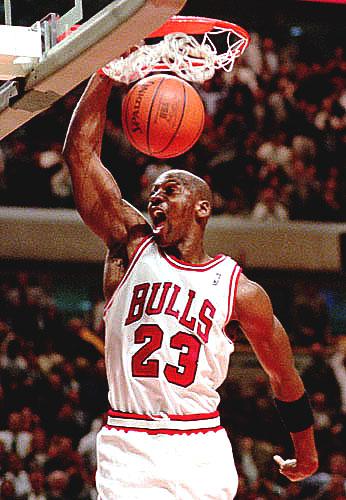
Group assignments can be a challenge for college students. Your grade for the class is now in someone else’s hands, and most people do not react well when they feel that they have lost their sense of control over a situation. When your success is directly related to the actions of others, it can bring out the worst in you.
However, once you learn how to bring out the best in others, you will all succeed as a group!
One of my teachers once told me, “If you had Michael Jordan on your team, you would let him play! You wouldn’t keep him on the bench all game.” And she was, of course, correct. When you have talented teammates, as a leader, you should empower them to do what they do best. For your group work projects, bringing out the best in others requires three simple steps:
1) Identify the skills and passions of others in your team
2) Assign roles that match the person’s talents or interests
3) Don’t tell them how to do their job / Don’t micromanage
The first step is identifying the skills of your teammates. Everyone has something that they are good at or that they like doing. When you discover, for instance, who on your team is the creative thinker and who is the analytical thinker, you can then place those people in roles where they can flourish.
The second step is as follows: Once you have identified each person’s strengths and what they bring to the team, give them tasks that they can perform to the best of their ability. For example, the creative person might be great at brainstorming ideas, but lack the discipline to choose one single idea and iron out all the details. A more detail-oriented teammate might be a pro at developing an outline and filling in the missing spaces, but a nervous wreck when it comes to presenting. A third teammate, who is very outgoing and enthusiastic but seems to lose focus easily, might be a captivating presenter. If you assign these people to the right roles, you can see how the entire group will succeed with far less of a headache. Likewise, if you arbitrarily assign people to tasks such that their talents are not being used effectively, you waste time and energy and create unnecessary stress.
The third step is just stepping back and watching your well-oiled machine work. When you have identified people’s strengths and placed them in the right positions, you need to make them feel empowered to do their job their way. Sometimes, this can be the most difficult step, especially for the leader. It is difficult to trust people when you have a stake in the collective results! You need to first trust yourself and know that you have performed the first two steps well.
All right, what do you do when you get a dud on your team who seems to have no skills? I know that not every team is going to have prodigal members with useful core competencies. When this happens, I suggest you ask that person what they think they are good at. Everyone thinks that they have strengths in some area (whether you agree or not is a different story). Let them tell you how they feel they can best contribute, and see where it goes from there.
Much of this goes back to the idea of SYNERGY which I reference in an earlier post: 2 + 2 = 5. Look for the Michael Jordans on your team and let them shine! It is difficult to trust others and relinquish control, but you must find a way if you want to succeed as a team.
Have you ever felt like you were the Michael Jordan on your team and that your talents were wasted? How can you avoid letting that happen to others in the future?
Reblogged this on inspiredweightloss.
Michael Jordan brought me here